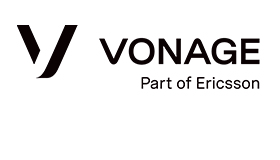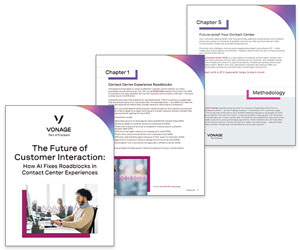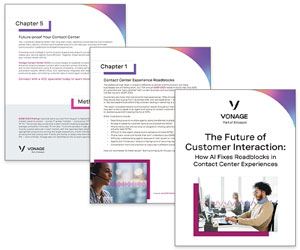Let’s define contextual communication and dive into how businesses and developers can leverage the concept to deliver exceptional customer experiences and a significant competitive edge.
What’s the Definition of Contextual Communication?
Let’s start at the beginning—a formal definition of contextual communication: contextual communication is the bidirectional transfer of information between two parties where both parties are aware of the relational, environmental, and cultural context of the exchange.
Sound like a bunch of jargon? Let’s distill it down: Contextual communication is really about both sides actually knowing what the conversation is about.
For instance, if you receive a call from somebody, and the CLI (command-line interface) was blocked, the identity of the call was blocked, and it said “unknown,” there would be no context for that information.
And so you’d say, “Hello, who’s talking? What do you want?” And all of those questions allude to building a context around the conversation.
On the other hand, if you received a phone call, for example, from somebody within your address book, like your friend Jamie, you know more, but you don’t have the full context: You know who, but you wouldn’t actually know what Jamie wanted to discuss on the call.
From here, extrapolate this further and think of customer interactions. If you or your business start making calls from within apps and people on the other side who are supporting those calls know that, for instance, somebody is calling from within an app, they have an idea of who’s calling and why they’re calling. And now there’s an overview of the continuum of context within a conversation.
What Are Some Common Use Cases for Contextual Communication Within Customer Engagement?
Let’s consider two ways to think about communications: Communications as core and communications a feature.
Communications as core refers to companies like Viber, WhatsApp, or Skype, where you can call up a contact and have a conversation just like you would on a normal telephone network. There’s not much context around that.
By contrast, when we start talking about companies that use communications as a feature, we’re talking about examples like the sharing economy or symmetrical marketplaces; this refers to companies like Airbnb or Uber, where communications is really a feature within the application itself.
If you’re an Uber driver, and Jamie’s a passenger, and Jamie is trying to get a hold of you to find out where you are and you receive a call, there’s a great deal of context around that conversation already within the app.
You know that Jamie is a rider and that’s she’s booked a ride. You’ll know her approximate location. Together, you’ll be able to have an immediate conversation around the context of what you’re trying to achieve, which is ride sharing.
That’s how contextual communications is going to evolve from a one-way conversation to a communications as a feature point of view.
What Technology Is Needed to Enable Contextual Communications?
The original technology for contextual communications was a traditional phone network. People used to call each other on what’s commonly referred to as the PSTN, the public switched telephone network.
But the whole app economy has brought quite a few new technologies that enable calls. One of those technologies is a technology called WebRTC, where the RTC bit stands for real-time communication.
These technologies are a group of protocols and codecs and technologies based predominantly around IP communications.
And so now it’s possible to have high-quality, high-definition video, high-quality audio, higher quality than the PSTN itself due to the technology involved. These are now being rolled out for various platforms, available for various platforms mainly around iOS, Android, and on the web.
These newer technologies have brought down the barrier to entry to what traditionally, five to ten years ago, would have been high-end broadcast quality and expensive communication products.
With the adoption of new technologies like WebRTC, the market is now seeing a democratization of the kind of high-quality communications that are now enabling exciting customer engagement use cases.
This blog post has been re-published by kind permission of Vonage – View the Original Article
For more information about Vonage - visit the Vonage Website
Call Centre Helper is not responsible for the content of these guest blog posts. The opinions expressed in this article are those of the author, and do not necessarily reflect those of Call Centre Helper.
Author: Vonage
Published On: 4th Nov 2022 - Last modified: 8th Nov 2022
Read more about - Guest Blogs, Vonage






 Vonage is redefining business communications, helping enterprises use fully-integrated unified communications, contact centre and programmable communications solutions via APIs.
Vonage is redefining business communications, helping enterprises use fully-integrated unified communications, contact centre and programmable communications solutions via APIs. 












